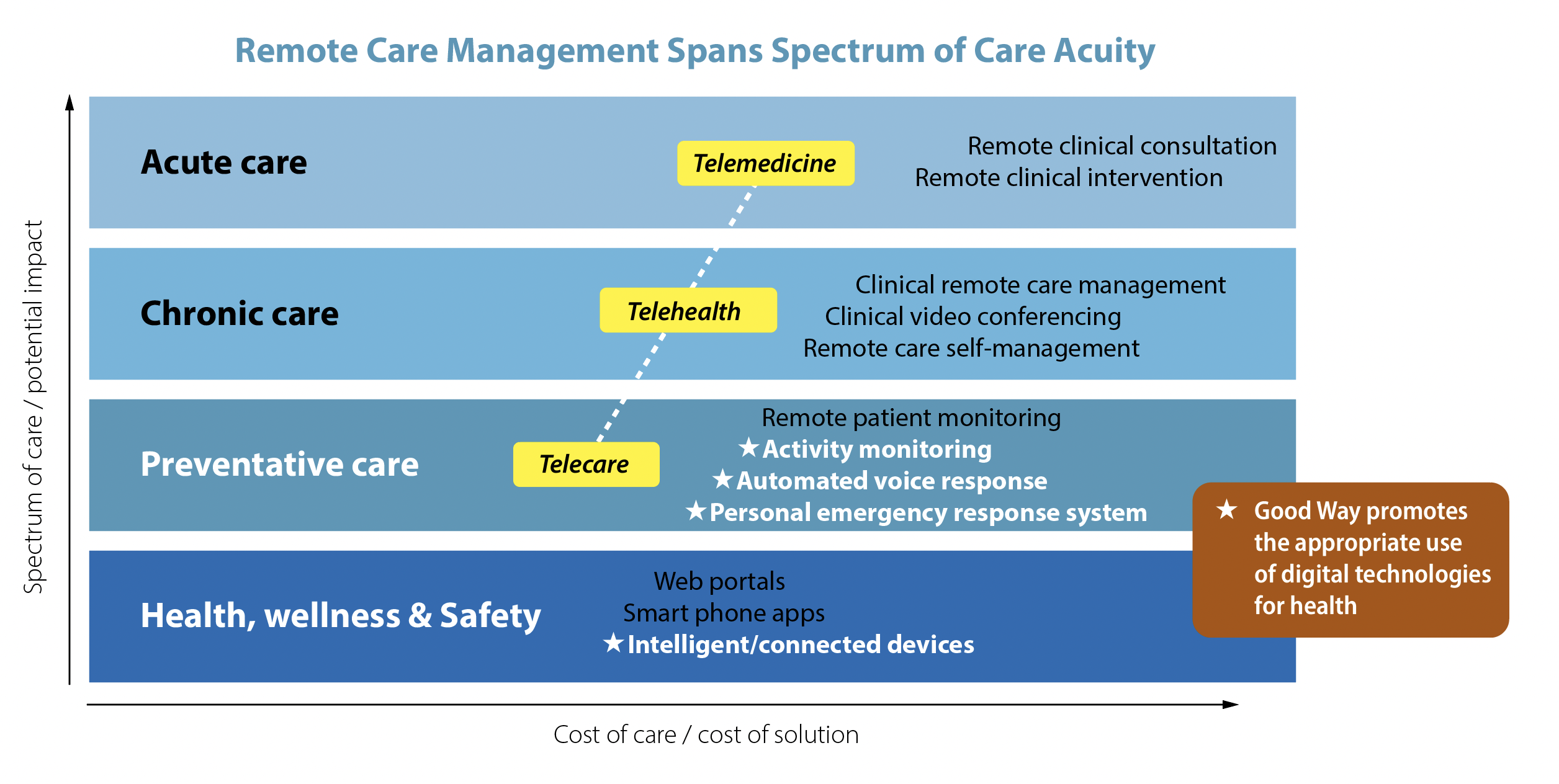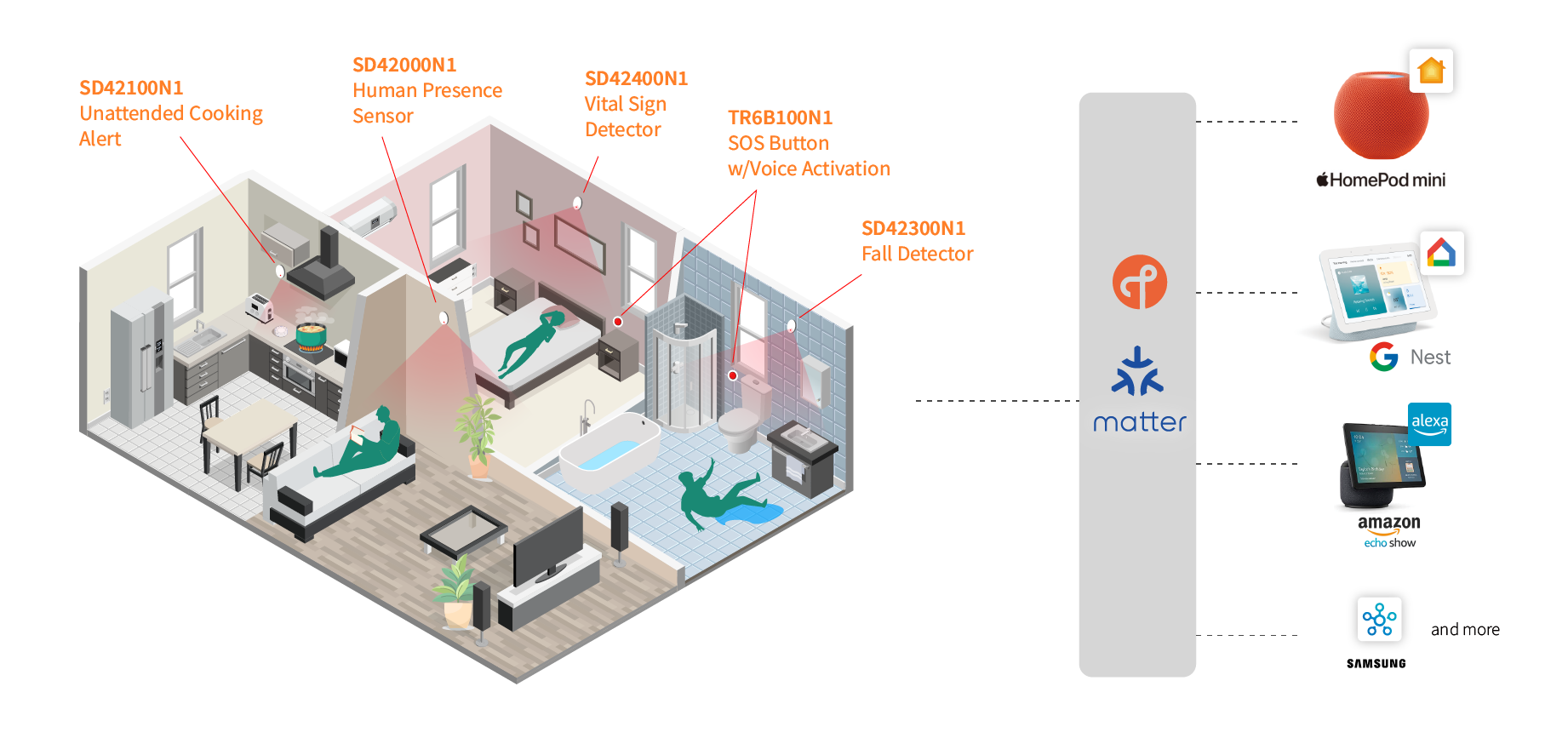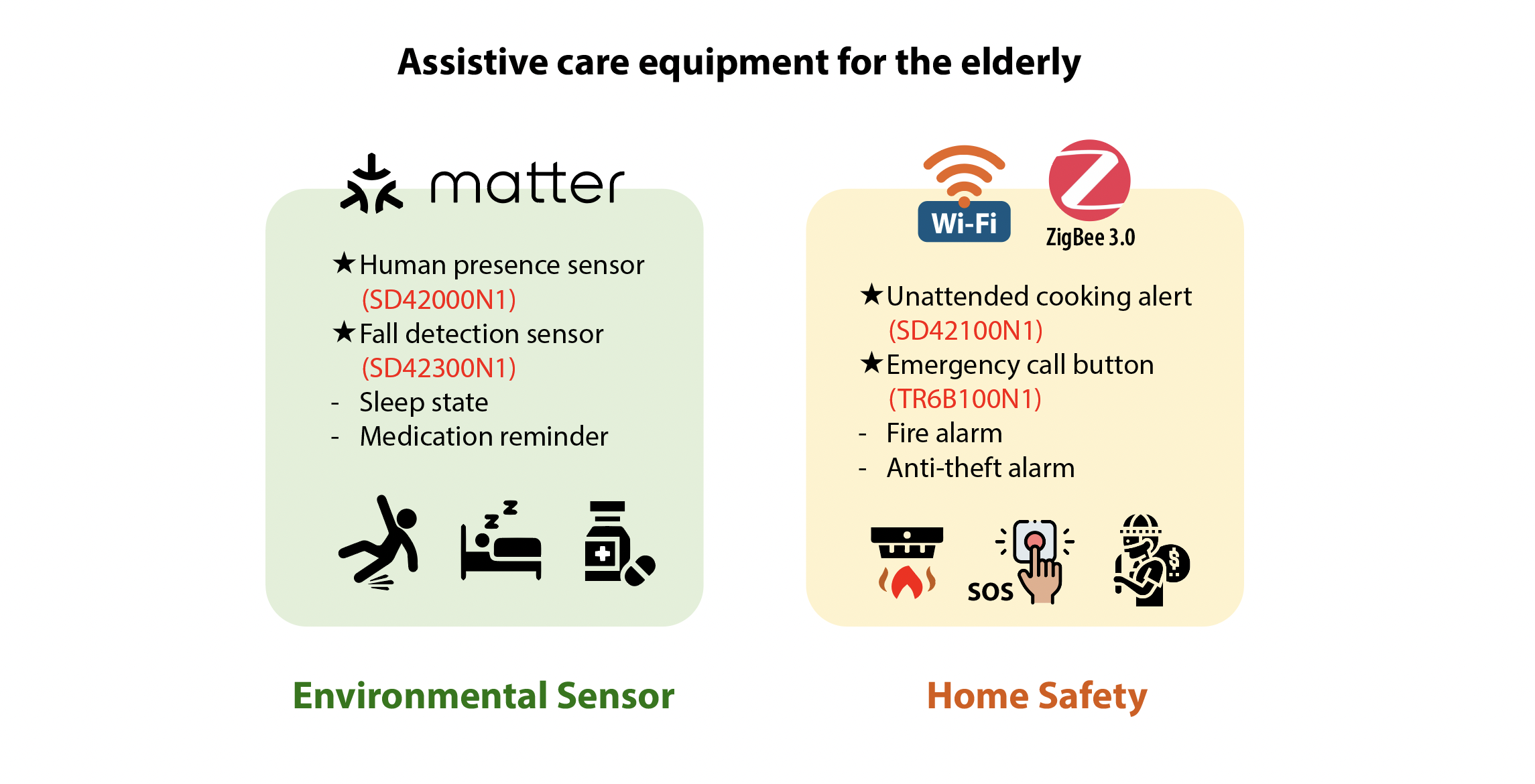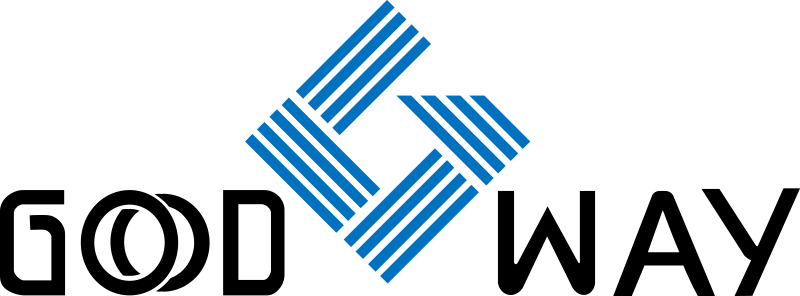Vision
The vision of Good Way’s Elderly care product is to improve health for everyone, everywhere by accelerating the development and adoption of appropriate, accessible, affordable, scalable and sustainable personcentric digital health solutions to prevent, detect, developing infrastructure and applications that enable countries to use ADLs(Activities of daily living) data to promote elders health and well-being, and to achieve the health-related Sustainable Development Goals.
Good Way’s Elderly care product supports equitable and universal access to quality health services; enhances the efficiency and sustainability of health systems in delivering quality, affordable and equitable care; and strengthens and scales up health promotion, management, rehabilitation, life safety and disease prevention in a system that respects the privacy and security of digital health information.
We Focus

Scenario

Aging and Health
By 2030, 1 in 6 people in the world will be aged 60 years or over. At this time the share of the population aged 60 years and over will increase from 1 billion in 2020 to 1.4 billion. By 2050, the world’s population of people aged 60 years and older will double (2.1 billion). The number of persons aged 80 years or older is expected to triple between 2020 and 2050 to reach 426 million.
Evidence suggests that the proportion of life in good health has remained broadly constant, implying that the additional years are in poor health. If people can experience these extra years of life in good health and if they live in a supportive environment, their ability to do the things they value will be little different from that of a younger person.
Maintaining healthy behaviours throughout life, particularly eating a balanced diet and engaging in regular physical activity, all contribute to reducing the risk of non-communicable diseases, improving physical and mental capacity and delaying care dependency.
Human presence sensor can provide ADLs such as Frequency (activity frequency), Intensity (activity intensity) and Time (activity time) of the elderly's home activities, making up for the lack of home activity data in the healthy aging plan, and Provide accurate guidance on exercise-enhancing programs.
Falls and the resulting complications among the elderly population are a common problem. Among older adults in Canada, ≥ 65 years old, 30% of those living in the community and 50% of residents living in care facilities will fall each year. Therefore, a dedicated monitoring system is highly desirable to improve independent living.
Align with the concept of “Safe Aging in Place” by providing a reliable means of emergency communication and support for the elderly living alone. It can respond to specific SOS-related keywords or phrases spoken by the user. It will recognize these phrases and activate the emergency alert.
The U.S. Fire Administration has reported in the past that approximately half of all home fires start in the kitchen. The most common cause of these fires is Unattended cooking. The unattended cooking alert sensor designed for alerting elders don’t leave kitchen space while cooking, and use for monitoring stove temperature applications.
Ensuring safety, privacy and security for these ADLs data and health information.

